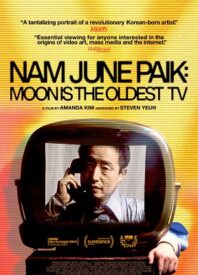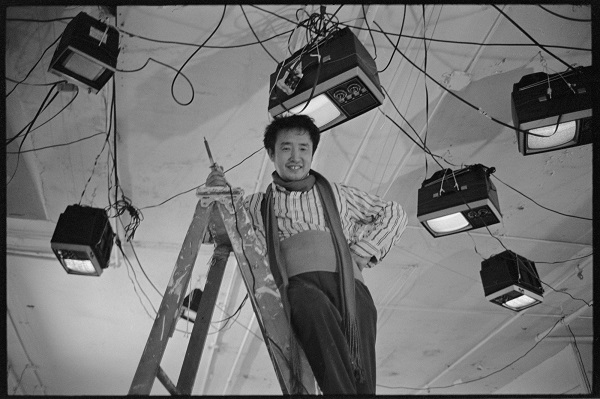
Nam June Paik, a Korean-American artist, came into this world when Korea was a part of the Japanese Empire. And he died years after Mark Zuckerberg invented Facebook. It’s a life long enough for an ambitious documentary filmmaker to try to cover within less than two hours. But director Amanda Kim captures the essence of one of the art world’s prophetic figures. Her film Nam June Paik: Moon is the Oldest TV covers the key period of his life between the 1960s to the 1980s. It shows archive footage of him as part of the Fluxus movement. Fluxus is a relatively obscure movement who created through destruction, sometimes even the destruction of the self. Destruction of notions of nation, as a man who saw nationalism’s own path of detruction.
‘Art’ is a word that gives regular viewers preconceived notions, specifically, stuffy and white. It’s the world Paik tries and succeeds to infiltrate studying Eurocentric classical music. Nam June Paik needs to tell the story of its titular subject. And in doing so, must and successfully deconstructs the stuffy and white notions of art during the 1960s. It shows Paik and his extended family of hippies use earlier versions of video cameras. That gadget democratizes an art world with its hierarchal mediums. It also shows the diversity within the scene during that time. Obviously there’s Paik and Yoko Ono, but there were also Black people within the movement like Ulysses Jenkins, one of this film’s memorable talking heads.
Nam June Paik goes through the artist’s biggest pieces like Global Groove. For that piece, Paik and fellow artists like his idol John Cage take over New York City’s PBS affiliate and display their performance art pieces. One of the film’s interviewees compared Groove to Youtube. This comparison is one of the ways it shows receipts on how his work influences 1980s MTV which eventually trickles down to streaming platforms where anyone can upload a video and change the world. The delivery of these facts are mind blowing and it shows the importance of his and everyone’s work. It does this while reminding viewers of art’s ephemeral nature. Providing further context is Steven Yeun’s voiceover work, capturing the man’s pathos.
An early scene in Nam June Paik has one of the interviewees calling him a genius, which the film juxtaposes with the image of the titular artist bowing to the ground and pie-ing himself in the face. Viewers watching this may feel some mix of humour and trauma and in a way, the film navigates both humour and trauma smoothly. One of his later pieces is a simulcast of a New Year’s Eve Celebration. That simulcast was a spectacular failure, but one he takes in stride and sees victories within. He losses that day but eventually wins, foreseeing how people in real life celebrate New Year’s Eve or any big day. This film lucks out on an inherently interesting subject and takes us on a fun ride. Ryuichi Sakamoto’s score also shifts within the film’s emotional beats with ease.
Watch Nam June Paik: Moon is the Oldest TV at Hot Docs Cinema and select American theatres. Fab Five Freddy serves as an executive producer. Stay until the final credits.
- Release Date: 3/31/2023


